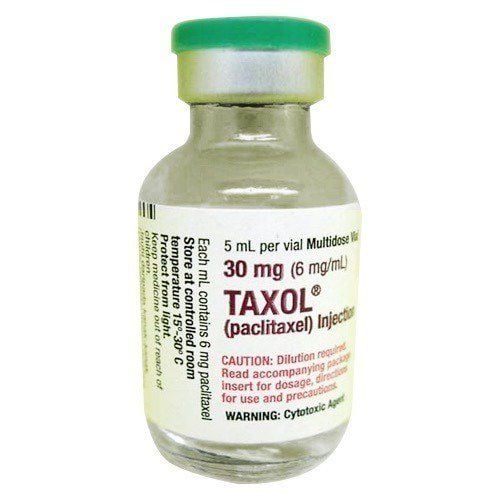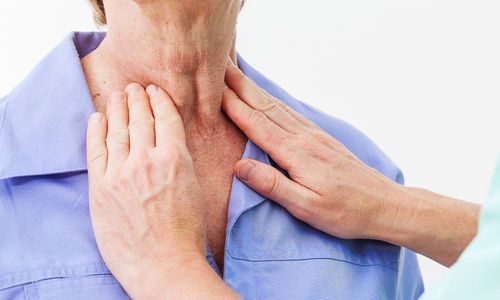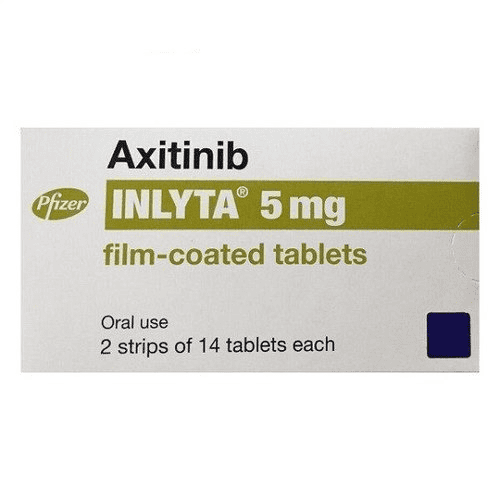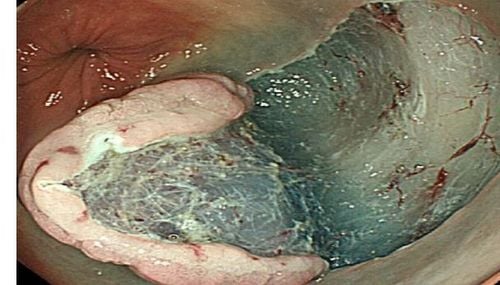This is an automatically translated article.
Pancreatic cancer is a rare cancer, however it can cause a high risk of death, moreover, the survival prognosis for patients is often very low even with early treatment . There is no specific number that tells you how long you will live, it is all an estimate and is based on each person's medical condition.
1. What is pancreatic cancer?
Pancreatic cancer is a type of malignant cancer that usually begins when exocrine cells in the pancreas grow out of control. This is an extremely important endocrine organ, responsible for producing enzymes that help the body digest food containing proteins, carbohydrates and fats.
Although this cancer accounts for only a small percentage of other malignancies, its seriousness to the health and life of the patient is often great. If not detected and treated early, tumors will grow aggressively, leading to a high risk of death.
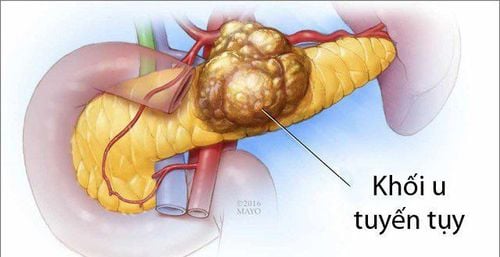
2. Types of pancreatic cancer
Exocrine cancer is the most common type of pancreatic cancer. The majority of patients diagnosed with pancreatic cancer are exocrine pancreatic cancers. Here are the most common types of pancreatic cancer, including:
Pancreatic cancer: this is a cancer that usually starts in the ducts of the pancreas. In rare cases, cancer develops from cells that make pancreatic enzymes, called acinar cell carcinomas. Some uncommon types of exocrine cancer: squamous cell carcinoma, adenocarcinoma, squamous cell carcinoma, large cell carcinoma (undifferentiated), non-small cell carcinoma distinguish. Carcinoma of ampulla of Vater: This type of cancer usually begins in the ampulla of Vater, where the pancreatic duct and bile duct join together and exit the ampulla of Vater into the duodenum. These are not technically pancreatic cancers, but they are included here because the treatments for these cancers are the same. Carcinoma of the ampulla of Vater often blocks the bile ducts, causing bile to accumulate in the body, which in turn leads to yellowing of the skin and eyes. Because this symptom of the disease appears quite early, the cancer is detected earlier than most other pancreatic cancers and the patient has a better prognosis.
Trắc nghiệm: Bạn biết gì về các yếu tố nguy cơ, chẩn đoán và điều trị ung thư tuyến tụy?
Ung thư tuyến tụy phổ biến thứ 10 trong những bệnh ung thư mới và là nguyên nhân thứ 4 gây tử vong do ung thư ở nam, nữ. Bài trắc nghiệm này sẽ kiểm tra kiến thức của bạn về các yếu tố nguy cơ, chẩn đoán và cách điều trị ung thư tuyến tụy.
Bài viết tham khảo nguồn: medicalnewstoday 2019
3. Causes of pancreatic cancer
Currently, scientists have not found the exact cause of pancreatic cancer. However, several risk factors can lead to this disease, including:
3.1 Age
The risk of pancreatic cancer increases as you age. The majority of patients with pancreatic cancer are aged 45 or older, of which two-thirds of cases are 60 years old. Thus, the average age at the time of cancer diagnosis is 70 years.3.2 Gender
Men are more likely to get pancreatic cancer than women. Part of the reason comes from the men's smoking habits.
3.3 Race
African Americans have a higher risk of developing pancreatic cancer than Caucasians.
3.4 Family history
Pancreatic cancer often runs in families. You will be more likely to get the disease if there is also a family member with a history of pancreatic cancer.
3.5 Genetic syndromes
Inherited gene mutations can be passed from parent to child. According to studies, these gene changes account for 10% of the causes of pancreatic cancer. Sometimes, inherited syndromes can also lead to cancers or other health problems, such as:
Ovarian cancer syndrome : caused by mutations in the BRCA1 or BRCA2 genes. Hereditary breast cancer: caused by mutations in the PALB2 gene. Atypical and melanoma multiple mole syndrome (FAMMM): caused by mutations in the p16/CDKN2A gene, often associated with skin and eye melanoma. Lynch syndrome: also known as hereditary non-polyposis colon cancer (HNPCC). This condition occurs due to a defect present in the MLH1 or MSH2 gene. Hereditary pancreatitis: usually caused by mutations in the PRSS1 gene. Peutz-Jeghers syndrome: originates from defects in the STK11 gene. In addition, this syndrome is also associated with polyps in the digestive tract and some other cancers.
3.6 Smoking
Tobacco is one of the leading risk factors for pancreatic cancer. The incidence of this cancer in habitual smokers is twice as high as in those who have never smoked. According to statistics, about 25% of pancreatic cancer cases are concluded to be caused by smoking. In addition, smoking cigars, or smokeless tobacco products also contributes to an increased risk of disease. Your chances of getting pancreatic cancer are greatly reduced if you stop smoking.

3.7 Chronic pancreatitis
People with long-term pancreatitis have an increased risk of developing pancreatic cancer. Chronic pancreatitis is most common in heavy alcohol users and frequent smokers.
4. Symptoms of Pancreatic Cancer
Pancreatic cancer in its early stages usually does not cause any specific symptoms. When symptoms of the disease appear, the cancer has already grown and spread beyond the pancreas. Here are some typical symptoms of pancreatic cancer, including:
Jaundice, yellow eyes: most pancreatic cancer patients will have jaundice. This is the first symptom of the disease. Jaundice is caused by a build-up of large amounts of bilirubin, a dark yellow-brown substance made by the liver. Normally, the liver secretes bile containing bilirubin. Bile will pass through the bile duct into the intestine, where it is responsible for breaking down fats. They then leave the body in the feces. However, when the bile duct is blocked, it will prevent bile from reaching the intestines, thereby causing bilirubin accumulation in the body, and leading to jaundice. Dark urine: This is a consequence of high levels of bilirubin in the blood, making the urine brown. Pale or greasy stools: bilirubin is a substance that gives stool its brown color. When the bile duct is blocked, the stool may turn gray or light. In addition, if the enzymes in the bile and pancreas do not enter the intestines to do their job of breaking down fats, the stools will become greasy, or greasy. Abdominal and back pain: these are common symptoms of pancreatic cancer. Cancer usually starts in the tail of the pancreas, then grows larger and presses on other surrounding organs, causing pain for the patient. When cancer spreads to the nerves near the pancreas, it causes back pain. Other symptoms include loss of appetite, weight loss, nausea, vomiting, enlarged gallbladder or liver, blood clots, or diabetes.

>> See more: Molecular biology test in the diagnosis of pancreatic cancer – Posted by Master, Doctor Mai Vien Phuong - Department of Medical Examination & Internal Medicine - Vinmec Central Park International General Hospital
5. Survival rates for pancreatic cancer
What is the survival rate for pancreatic cancer? This is a question that most people with this disease wonder and worry about. In fact, even when cancer is detected early and treated by various methods, the patient's survival prognosis still has little chance of prolonging.
Relative survival rates are often compared between people with the same type and stage of pancreatic cancer. For example, if the 5-year relative survival rate for a given stage of pancreatic cancer is 50%, this means that patients with this cancer will have an average of about 50%. survive at least 5 years after diagnosis.
The American Cancer Society relied on information from the SEER database, provided by the National Cancer Institute (NCI) to derive survival statistics for different types of cancer. According to SEER, the 5-year relative survival rate for pancreatic cancer patients will be based on how far the cancer has spread. However, the SEER database does not divide cancer groups into AJCC TNM stages (eg stage 1, stage 2, stage 3,..). Instead, the cancer group will be classified into stages, including local, locally advanced, and metastatic.
Local stage: there are no abnormal signs that the cancer has spread outside the pancreas. Patients will have about a 12- 14% chance of survival for 5 years. Locally advanced stage: this is when the cancer has spread from the pancreas to nearby structures or lymph nodes. Patients will have about 5-7% chance of survival. Metastatic stage: the cancer has spread to distant parts of the body, such as the liver, lungs, or bones. The patient's chance of survival is only 1-3 % (very low).
Early cancer screening is considered a perfect measure in the timely detection and treatment of all types of cancer. Reduce the cost of treatment and especially reduce the mortality rate in patients. Vinmec International General Hospital always deploys and introduces to customers HIGH-TECH CANCER CHECKLIST AND SCREENING PACKAGE for gene testing, imaging, and biomarkers for early tumor detection. Vinmec International General Hospital has many early cancer screening packages. Only one gene test can assess the risk of 16 common cancers in both men and women (lung cancer, colon cancer) rectal cancer , breast cancer , pancreatic cancer , cervical cancer , stomach cancer , prostate cancer ,....)
Early detection of early signs of cancer through diagnosis imaging, endoscopy and ultrasound. The operation is simple, careful and accurate. A team of well-trained specialists, especially in oncology, are capable of handling cancer cases. With facilities, advanced and modern medical equipment and a team of doctors with deep expertise and experience. At Vinmec, the examination process becomes quick with accurate results, saving costs and time for patients.
To register for examination and treatment at Vinmec International General Hospital, please book an appointment on the website for service.
References: cancer.org
Please dial HOTLINE for more information or register for an appointment HERE. Download MyVinmec app to make appointments faster and to manage your bookings easily.




